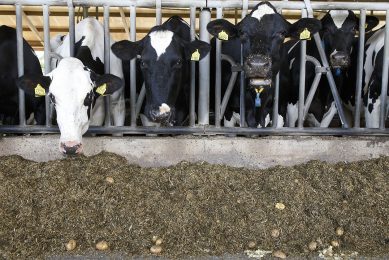Largest 100 agriculture co-ops in US do well
The 100 largest agriculture cooperatives in the US reported near-record revenue of $118 billion in 2010, USDA Rural Development Under-Secretary Dallas Tonsager has reported. This was an increase of 4% over 2009 figures.
Net income for the 100 top agriculture co-ops was also up more than 10% in 2010, reaching $2.39 billion, up from $2.16 billion in 2009.
"Farmer and rancher-owned cooperatives are a mainstay in the American economy, not only helping members market and process their crops, milk and livestock and creating jobs, but also helping producers keep more of the earnings derived from their products at home, in rural counties and communities," Tonsager said.
"The end result is a huge net benefit for producers, their communities and the overall rural economy. Farmer co-ops also account for significant numbers of jobs and economic activity in many cities."
CHS Inc., a farm supply, grain and foods cooperative based in Saint Paul, Minnesota, topped the list with 2010 revenue of $25.3 billion.
Land O’ Lakes, a dairy foods and farm supply co-op, also based in Saint Paul, ranked second, with revenue of $11.1 billion; Dairy Farmers of America, based in Kansas City, MO, was third with $9.8 billion in 2010 revenue.
Strong dairy cooperatives
USDA’s top 100 ag co-op list shows that 23 co-ops had 2010 revenue of more than $1 billion. Another 47 co-ops had revenue between $506 million and $1 billion. The 100th ranked co-op had sales of $276 million.
Leading the revenue increase from 2009 to 2010 were dairy cooperatives, which saw 2010 revenue climb more than 14.5% from the previous year, to $29.5 billion.
Dairy cooperatives accounted for more than half of the revenue increase recorded by the top 100 ag co-ops in 2010.
Margins up
Gross margins, as a percent of total sales, were up slightly, from 9% to 9.2%. The increase in gross margins partially covered higher expenses. Gross margins plus service revenue climbed to $684 million.
Total expenses for the top 100 ag co-ops were up $575 million in 2010.
The largest cost increase was for labour, where expenses climbed by 7%, to $4.6 billion. On the other hand, lower interest rates and less debt caused interest expense to drop 11%.
Local vs. national
"While it is encouraging to see the nation’s largest farmer-owned cooperatives reporting strong revenue and income, it is also noteworthy that the nation is seeing a surge in the formation of small-farmer cooperatives and quasi-cooperatives that have been created to meet the growing demand for locally produced foods," Tonsager said.
The asset base for the top 100 ag co-ops grew by $2.3 billion between 2009 and 2010. Current assets accounted for nearly two-thirds of that increase. Fixed assets also showed an increase of $600 million.











